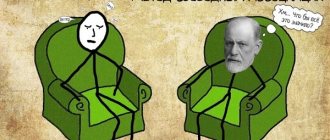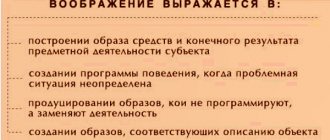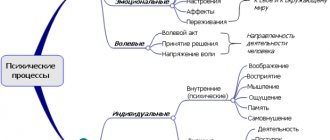Today, one of the most common diseases are various types of allergies. For example, approximately 10-25% of the population suffers from allergic rhinitis, and 22% of the population suffers from allergic eye diseases.
The complexity of this problem is significant, so people suffering from allergies often have to put up with a significant decrease in the comfort of life. Immunotherapy came to the rescue, thanks to which the fight against allergies became more effective.
Epidemiology of allergic diseases
According to recently published data, more than 35% of the population of European countries have symptoms of allergic diseases. The results of epidemiological studies have shown that allergic diseases of various clinical manifestations occur in 30-40% of the Russian population.
Allergic rhinitis is currently one of the most common groups of diseases among those identified in the study (about 24% of the population aged 6 to 44 years).
Most allergic diseases are chronic, which requires systematic and consistent treatment.
Recent Use
Desensitization is widely known as one of the most effective therapies. In recent decades, it has been increasingly used in the treatment of anxiety disorders. Since 1970, academic research into systematic desensitization has declined and the focus is now on other treatments.
Additionally, the number of clinicians using systemic desensitization has also decreased since 1980. Professionals who continue to use this method regularly were trained before 1986. It is believed that the decrease in popularity of the method among practicing psychologists is associated with the emergence of others, such as flooding and implosion therapy.
How the immune system works
The immune system, first of all, is needed to preserve the integrity of the body by protecting it from the negative effects of the external environment, i.e. from bacteria, viruses, fungi, toxins and many other factors.
Despite the fact that there are many ways for foreign elements to enter the body, the main ones are: oral, breathing and skin, because here the greatest interaction with various pathogens takes place.
The first line of defense is elements of the nonspecific immune response, such as gastrointestinal and respiratory enzymes, stomach acid, acidic vaginal discharge, commensal bacteria of the gastrointestinal tract, and others.
Among the mechanisms of nonspecific immunity, phagocytosis is distinguished by its activity. Phagocyte cells (macrophages and neutrophils) as the first primitive blow absorb bacteria and viruses that penetrate the body.
The second, main part of the immune system consists of elements responsible for a specific response directed specifically against a given antigen. Phagocyte cells transmit accumulated information about the structure of the antigen to T-lymphocytes, which have the ability to recognize and distinguish between their own and foreign antigens.
Then comes the transfer of information about the antigen to B lymphocytes. These cells are responsible for humoral and cellular immunity, the ability to produce antibodies directed against a recognized antigen. The antibodies produced have the ability to bind foreign antigen and remove it from the blood circulation.
Individual intolerance and allergies
Hypersensitivity is a broader concept than allergy, meaning that, in theory, healthy people with hypersensitivity could experience clinical manifestations.
Hypersensitivity can be allergic or non-allergic. An allergy is an alternative, incorrect reaction that results in the production of IgE class antibodies.
This is a polygenic phenomenon caused by a genetic defect. The tendency to excessive production of IgE is inherited. Primarily, a predisposition to allergies is inherited, and environmental influences are crucial in triggering the development of the disease.
IgE-dependent allergies include: neurodermatitis (asthma, allergic rhinitis and conjunctivitis, atopic dermatitis, some urticaria and Quincke's edema) and a generalized anaphylactic reaction to an insect bite and after an injection of penicillin.
Application in educational institutions
Between 25 and 40 percent of students experience anxiety. They may suffer from low self-esteem and stress-related symptoms as a result of test anxiety.
Systematic desensitization principles can be used to reduce their anxiety. Children would benefit from practicing relaxation techniques by tensing and relaxing different muscle groups.
When working with older schoolchildren and students, explaining the essence of desensitization helps to increase the effectiveness of the process. Once teens learn relaxation techniques, they can model the anxiety that stimuli cause. These subjects sometimes involve misunderstandings in class or labeling answers correctly. Teachers, school counselors, or psychologists can teach children systematic desensitization techniques.
How allergies develop
The first contact with an allergen, which can be almost any substance (for example, pollen, dust mites, pet dander, mold) leads to the production of IgE antibodies, which are produced by mast cells (mast cells). Thus, the body develops an allergy to a certain allergen, which, when encountered again, will lead to a cascade reaction.
A signal is transmitted inside mast cells and the release of allergy mediators, primarily histamine, leukotrienes and prostaglandins, which stimulate contraction of bronchial smooth muscles, lead to swelling of the mucous membrane and increased permeability of vascular cells.
Eosinophils, which represent the basis of chronic allergic inflammation, begin to arrive at the site of the allergic reaction. They determine the severity of the disease and the occurrence of complications.
Use with specific phobias
Specific phobias are a type of mental disorder that are often treated through systematic desensitization. When people experience such anxieties (eg, fear of heights, dogs, snakes, closed spaces, etc.), they tend to avoid anxiety stimuli. This may temporarily reduce anxiety, but it is not necessarily an adaptive way to deal with it.
In this regard, the behavior of patients avoiding phobic stimuli may become reinforced by the concept defined by the principles of operant conditioning. Thus, the goal of systematic desensitization is to overcome avoidance behavior by gradually exposing patients to a fearful stimulus until the stimulus no longer causes anxiety. Wolpe found that systematic desensitization was successful in 90% of cases in treating phobias.
Living with allergies
A doctor's diagnosis of an allergy should always entail appropriate consequences. First of all, we are talking about the need to change lifestyle, as well as the use of therapeutic procedures.
The first and main behavioral strategy is, whenever possible, to avoid contact with the allergen. This, of course, is not always possible. In this case, drug treatment consists of relieving pain associated, for example, with rhinitis, inflammation of the conjunctiva or bronchial asthma .
There is also a third option, but its use is not possible in every case of allergies. This is a specific immunotherapy, that is, desensitization.
Eye movement desensitization
It has been suggested that eye movements or alternative types of stimulation used during desensitization procedures involve processes similar to those occurring during sleep.
The foundation of desensitization is the idea that each traumatic message is unconsciously processed by the brain and internalized during the dreaming stage of sleep, or in other words, the rapid eye movement stage of sleep. Severe mental trauma has a destructive effect on the natural process of information processing, which leads to incessant nightmares with frequent awakenings, resulting in a distortion of the REM sleep phase. Desensitization and processing with eye movements unblocks and speeds up the processing of traumatic experiences.
The essence of the desensitization method is the artificial activation of the process of forced processing and neutralization of memories associated with mental trauma and any other negative information blocked in the neurons of the brain. This method is able to provide quick access to separately stored traumatic information, which is subject to rapid processing. Memories that are characterized by negative emotional charge are transformed into neutral ones, and the corresponding ideas and views of individuals acquire an adaptive character.
The advantage of desensitization is to obtain quick results. This is what distinguishes it from most other methods of psychotherapy. F. Shapiro explains this phenomenon for the following reasons:
— in the course of setting the goal of influence, negative memories are combined into so-called clusters (i.e., a series of similar events), as a result of which only one, the most characteristic event from each cluster is processed through desensitization. This is often sufficient to generalize the consequences of transformation and simultaneously neutralize all similar memories;
— the method helps to gain direct access to dysfunctional data stored in memory;
— the information and processing systems of the brain are activated, which transforms information directly at the neurophysiological level.
Standard eye movement desensitization and reprocessing contains eight stages.
The first stage involves a safety assessment, during which the psychotherapist analyzes the clinical picture and outlines specific goals for therapy. The use of the desensitization method is only possible with patients who are able to cope with the possible high degree of anxiety during therapy. It is because of this that the therapist first helps resolve current problems, and then moves on to more ancient mental traumas. Ultimately, the future is worked out through the formation and consolidation of a positive example of behavior in the patient’s imagination. At this stage, clients are also taught to reduce stress through: imagining a safe place, luminous flow techniques, which involves imagining a beam of light with a healing effect entering the body, self-administered eye movements, or muscle relaxation.
The next preparatory stage is to identify painful symptoms and dysfunctional behavioral patterns. Also at this stage, therapeutic contact is established with the patient and the essence of the method is explained to him. The therapist finds out which of the proposed eye movements are less painful.
At the third stage, a negative self-image is identified, in other words, a currently existing negative belief directly related to mental trauma, reflecting the client’s self-image. It is also characterized by identifying a positive self-image, in other words, the belief that the client would like to have about himself. At this stage, the severity of negative emotional reactivity and bodily discomfort is also detected.
The fourth stage is directly desensitization and processing. It is characterized by causing the patient to move the eyes from one end of the optical field to the other. Such bilateral eye movements must be performed quickly, avoiding any discomfort. The psychotherapist asks the client to follow his fingers with his eyes. The psychotherapist's hand is facing the patient, the distance from the therapist's hand to the client's face should be no more than 35 cm. Typically, one series consists of approximately 30 eye movements. In this case, 1 movement is considered to be moving the eyeball back and forth. The direction of eye movements may change. First, the patient must concentrate mentally on the image of the traumatic event, negative self-image, negative and uncomfortable feelings associated with the memory. The therapist then begins a repetitive sequence of eye movements. After each series, the patient is asked to put aside the traumatic image and negative self-image for a while. The client must inform the therapist about any transformations in the picture of memories, emotions, ideas and sensations. Sequences of stimulating eye movements are repeated many times, at times directing the individual's attention to the most depressing associations that spontaneously arise during the procedure, and then again returning him to the original traumatic factor. The therapy session is carried out until the moment when the level of anxiety, restlessness, and fear during the reference to the original traumatic event decreases by 1 point on the scale of subjective anxiety.
The fifth stage is installation. It involves the client rethinking the previous experience, and the patient is imbued with the conviction that in reality he will be able to behave and feel himself in a new way.
At the next stage, the body is scanned. At this stage, the patient is asked to close his eyes and mentally scan his body, starting from the top of his head and ending with his heels. During the so-called scan, the patient must keep in mind his original memory and positive image of himself. If any residual tension or bodily discomfort is detected, additional series of eyeball movements should be performed until they are eliminated. This stage is considered a kind of test of the results of transformation, since with the absolute neutralization of the traumatic factor, it loses its negative emotional charge and ceases to generate uncomfortable sensations associated with it.
The goal of the seventh stage is to achieve emotional balance by the patient, regardless of the completeness of the processing of the trauma. For this purpose, the doctor may use hypnosis or other techniques. After the session, unconscious continuation of processing is possible if it has not been completed. As a result, the client is asked to remember or write down disturbing memories, thoughts or events, dreams, as they can be transformed into new targets of influence in subsequent desensitization sessions.
At the eighth stage, revaluation occurs. Its purpose is to check the effectiveness of the previous therapy session. Reassessment is carried out before each therapy session. The psychotherapist must assess the client’s reaction to previously processed goals, since it is possible to begin processing new goals only if the old ones are processed and assimilated.
On average, the duration of one therapy can range from an hour to two. It is not recommended to conduct more than two sessions per week.
Desensitization through eye movements has proven equally effective in working with children and adults, individuals with traumas from the past and with worries about the future. This method is easily combined with other areas of psychotherapy.
Specific immunotherapy
Specific immunotherapy, colloquially referred to as allergy desensitization , is a method that involves taking multiple, gradually increasing doses of a vaccine to stimulate immune tolerance and relieve symptoms associated with natural exposure to allergens. To understand this phenomenon, you need to familiarize yourself with the basics of immunology and the mechanisms of allergy.
The foundations of immunotherapy and desensitization were created based on the work of British scientists: Leonardo Noon (1877-1913) and John Freeman (1877-1962) in 1911-1914.
It is believed that the first attempts at immunotherapy were carried out in 1911 and concerned allergic rhinitis. They consisted of injections of small, gradually increasing volumes of a substance to which the patient was allergic. The methods proposed then are relevant and are still used today.
Mechanism of specific immunotherapy
The mechanism of desensitization is still not fully understood. The fact is that with immunotherapy there is a decrease in the concentration of specific IgE antibodies responsible for the allergic reaction.
This is confirmed by performing skin tests. Particularly important are regulatory changes, T lymphocytes (CD4+ CD25+), which reduce the proliferation and production of cytokines, alter the function of antigen-producing cells and specifically suppress IgE production.
In addition, a change in the cytokine profile occurs. The result is decreased effector cell activity and decreased inflammation. To summarize, we can say that desensitization simulates allergic inflammation, forcing the body to adapt, the result of which is an improvement in the clinical condition of the patient.
Types of specific immunotherapy
During desensitization, the vaccine can be administered in different ways: intradermal injection, oral administration, sublingual and inhalation.
Vaccine effectiveness has been shown to vary depending on the route of administration. The preferred route of administration is by injection, but other routes of administration, especially in pediatrics where the oral form predominates, are also widely used.
Safety of specific immunotherapy
Despite the fact that the method of specific immunotherapy has many advantages, it is associated with risks, so its implementation should be preceded by a thorough analysis of the clinical situation, study of medical records and skin tests.
The safety of desensitization depends on the correct selection of the vaccine and its correct use. The allergen is introduced under conditions that allow immediate medical assistance in the event of an anaphylactic reaction.
Desensitization for asthma is not possible for all patients, especially if certain diseases exist at the same time or certain medications are taken at the same time. In patients at increased risk, i.e. with purely positive skin tests confirmed by a high IgE content, special care must be taken.
In such cases, you should also consider not undergoing immunotherapy. In addition, an increased risk of developing a systemic reaction occurs if a dose of the allergen is given too much or time between doses is too short, an accelerated immunotherapy regimen is used, the vaccine is given from a new container, and too often during the pollen .
Side effects of immunotherapy
In the case of subcutaneous injection, the allergen can lead to a local reaction: swelling, redness, pain and itching at the injection site. Such symptoms do not require specific behavior other than to consider reducing the dose of the allergen.
The complication that doctors fear most is a systemic reaction to the specified allergen. Its form is characterized by the appearance of the following diseases: rhinitis, urticaria, Quincke's edema, exacerbation of asthma symptoms . In half of the cases, this reaction occurs within the first 30 minutes, in other cases - within 24 hours after administration. Drug treatment specific to this type of reaction is provided.
Life-threatening symptoms include swelling of the larynx, severe asthma attack that does not respond to treatment, and anaphylactic shock. Such conditions occur approximately once in 3000 injections and almost always appear within 30 minutes after the introduction of the allergen. A detailed algorithm for conducting therapy in such cases has been developed. The risk of death with immunotherapy is extremely low, approximately 1 in 2.5 million injections.
Correct use of specific immunotherapy and compliance with the rules for its implementation will undoubtedly protect against most threats to desensitization.
Efficacy of specific immunotherapy
Asthma desensitization is the most established treatment for allergic diseases. This therapy aims to develop tolerance to the most common allergens responsible for causing symptoms.
In addition, the normal relationship between Th1 lymphocytes, which work pro-inflammatory, and Th2 lymphocytes, which work proallergic, is restored. These mechanisms not only relieve symptoms, but also slow the progression of the disease. Specific immunotherapy is therefore an effective way to treat allergies .
The effectiveness of specific immunotherapy depends on the fulfillment of conditions, qualifications, appropriate selection of the vaccine, as well as the correct application of the regimen during the entire immunotherapy.
Keep in mind that desensitization may not be possible for all patients, especially if they have certain medical conditions or are taking certain medications.
Systematic desensitization
One of the first approaches that laid the foundation for the spread of behavioral therapy is today considered the method of systematic desensitization proposed by D. Wolpe. While developing the basic ideas of the desensitization method, Volpe came from several postulates.
Neurotic, interpersonal and other maladaptive behavior of an individual is mainly caused by anxiety. The actions that the subject performs in the imagination are equated to the actions performed by the individual in reality. Even the state of relaxation of the imagination will not be an exception to this postulate. Anxiety and fears can be suppressed if you combine in time the messages that cause fears and the messages that are opposite to fear, as a result of which the message that does not cause fear will extinguish the previous reflex. So, using the example of experiments with animals, feeding is such a dampening factor. And in a person, such a factor opposite to fear can be relaxation. It follows that teaching the individual deep relaxation and encouraging him to conjure up messages that cause anxiety in this state will lead to desensitization of the patient to real messages or situations that cause fear.
The method of systematic desensitization is relatively simple. In a patient who is in deep relaxation, ideas about events that give rise to fear are evoked. After this, through deepening relaxation, the individual eliminates the anxiety that arises. Mentally, in the imagination, the patient pictures various events, starting with the easiest and ending with the most difficult, generating the greatest fear. The desensitization session ends when the strongest message no longer causes fear in the individual.
Specific desensitization is divided into three stages, including mastering muscle relaxation techniques, creating a hierarchy of events that cause fear and desensitization itself - combining ideas about fear-causing events with relaxation.
Progressive relaxation training using the Jacobson method is carried out in an accelerated mode and takes approximately 9 sessions.
The patient may have phobias of a different nature, therefore all events that produce fear are divided into thematic groups. For each such group, the individual must create a hierarchy from the mildest events to the very difficult ones that give rise to pronounced fear. It is best to rank events according to the level of severity of fear together with a psychotherapist. The actual experience of fear by an individual in such a situation is a prerequisite for creating a hierarchy of frightening events.
Specific desensitization involves discussing a feedback technique that involves the patient informing the therapist about the presence or absence of fear at the moment of imagining the event. For example, the patient informs about the presence of anxiety by raising the index finger of his left hand, and about its absence by raising the finger of his right hand. Event presentations occur according to a constructed hierarchy. The patient imagines the event for 5–7 seconds, and then eliminates the anxiety that has arisen through increased relaxation. This stage lasts up to 20 seconds. Imagination of events is repeated up to several times in a row; if the individual does not develop anxiety, then one should move on to the next, more severe event. In one session, no more than 4 situations from the compiled hierarchy are worked out. If there is severe anxiety that does not disappear with repeated presentations of the situation, you should return to working through the previous event.
Today, the desensitization technique is used for neuroses caused by monophobias, which cannot be desensitized in real life situations due to the difficulty or impossibility of finding a stimulus in real life, for example, with a fear of flying in airplanes. In the case of multiple phobias, the desensitization technique is applied to each phobia in turn.
Systematic desensitization will be less effective in cases where anxiety is reinforced by secondary gain from the disease. For example, for a woman with agoraphobia, there is also a threat of her husband leaving home. In such a situation, the phobia will be reinforced not only by a decrease in anxiety when she does not leave the house and avoids situations that cause the phobia, but also by keeping her husband at home with the help of her symptoms. In such cases, the method of systematic desensitization will be effective only when combined with person-oriented areas of psychotherapy, focused on the patient’s awareness of the prerequisites for her behavior.
Systematic desensitization in real life contains two stages: the creation of a hierarchy of events that produce the appearance of fear, and direct desensitization, i.e. training in real conditions. The hierarchy of events that generate fear includes events that can be repeated many times in reality. The second stage is characterized by the therapist accompanying the patient in order to encourage him to increase his fear in accordance with the hierarchy.











